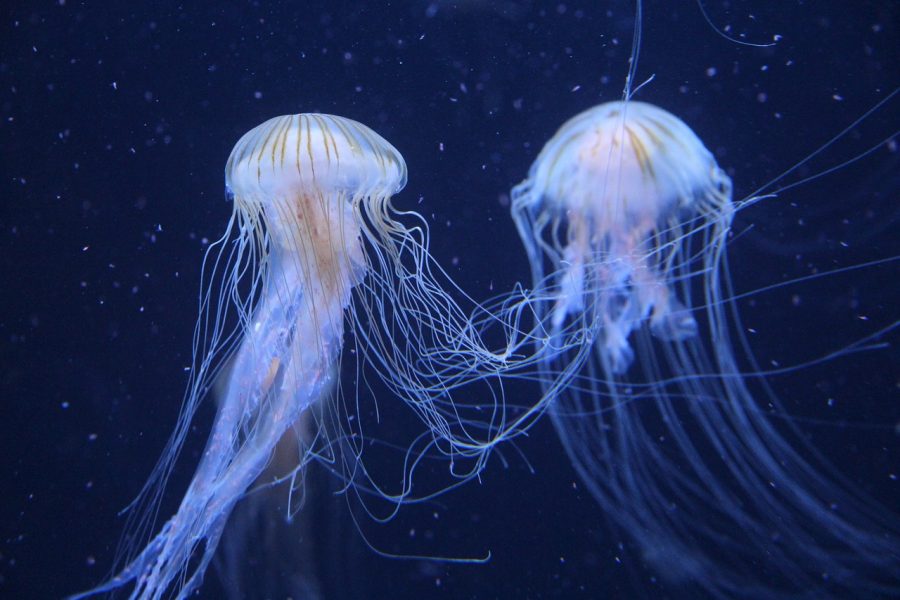Jellyfish-like robots could one day help clean up the world’s oceans, according to a team of researchers at the University of California, Los Angeles. These robots, which have been designed to mimic jellyfish, can potentially be highly effective in collecting waste in locations where traditional boats and other equipment can’t.
The robots include cameras that are capable of taking pictures of the ocean floor and sensors that allow them to pinpoint and gather waste. Additionally, they have the ability to maneuver through confined areas, which makes them perfect for picking up waste. Professor John Dabiri, the project’s principal investigator, claims that the robots have the potential to revolutionize the battle against marine pollution.
Early testing has proven beneficial, despite the robots remaining in the experimental stage. A prototype robot successfully removed a sizable amount of plastic waste from a tiny area of the ocean floor throughout one test. The group is currently focusing on broadening the technology’s use. The UCLA team has been working on creating robots that resemble jellyfish for several years, and significant progress has been made in recent months. They have been attempting to develop a system that is both effective and sustainable through changes to the robots’ design, functionality, and efficiency.
The capability of the robots to move in a way similar to jellyfish is one of their most distinctive features. They are able to move through the water with their tentacle-like appendages and are able to rotate and pivot in different directions. Moving through tight spaces easily gathers pollutants because of this.
The robots’ ability for autonomous operation is another key trait. This means that they can be programmed to navigate across specific regions of the ocean and are capable of carrying on collected trash even in the absence of human operators. This is particularly useful for tasks involving deep water, where operating with people may be challenging or dangerous.
A team at UCLA has also been working to ensure that the robots are environmentally friendly. They have designed the robots to be as energy-efficient as possible, intending to minimize their impact on the ocean ecosystem. Additionally, they have been trying to make sure the robots can collect garbage without disrupting nearby aquatic life. The robots which imitate jellyfish are designed to remove numerous types of marine debris from the ocean, including plastic waste and microplastics. Along with being a major contributor to climate change, this debris poses a serious threat to marine life and our seas. The jellyfish-like robots might assist in protecting marine life and reducing the amount of plastic that ends up in landfills or the ocean by removing this waste from the ocean.
The UCLA team has been dedicated to designing robots that resemble jellyfish for several years, and significant milestones have been achieved in recent months. They have been attempting to produce a system that is both efficient and ecologically friendly by improving the robots’ design, functionality, and efficiency.
The project received funding and support from a selection of organizations, including non-profits, for-profit businesses, and government organizations. This is a result of growing awareness and concern regarding ocean pollution in addition to the need for cutting-edge technology to assist in solving this pressing issue.
The potential benefits of this technology are enormous. The United Nations estimates that there are approximately 5.25 trillion pieces of plastic in the world’s oceans, which have a devastating impact on marine life and contribute to climate change. Robots that resemble jellyfish could potentially be crucial in safeguarding marine life and lowering the overall amount of plastic waste that ends up in the ocean or landfills by aiding in the removal of such debris from the ocean.
The creation of robots that resemble jellyfish for ocean cleanup has the potential to improve living in many ways. The seas, a vital resource for human life, may be protected and preserved first and foremost as a result. These robots may help in mitigating the negative effects of ocean pollution on ecosystems and marine life, which in turn may help with restoring the balance of the planet’s natural systems.
Likewise, the advancement of this technology can provide new job openings in the marine robotics field. There is likely to be a necessity for skilled employees to design, develop, operate, and maintain the robots as the demand for these kinds of technology increases. For people with a variety of talents and backgrounds, such as engineering, computer science, and marine biology, this can result in new job possibilities.
However, there are still issues that must be resolved. A concern is the impact that the robots could have on marine ecosystems, particularly if they inadvertently eliminate vital organisms. Through careful testing and design, the researchers are working to overcome such problems.
Despite these challenges, the creation of robots that resemble jellyfish brings up a fascinating fresh frontier in the struggle against ocean pollution. These robots may become crucial for preserving the health of our seas for future generations as they evolve and become better. There will certainly be more demand for these kinds of technology, which will lead to more employment openings in the maritime robotics industry.

























